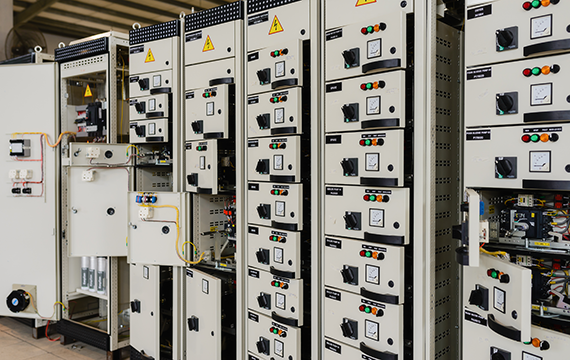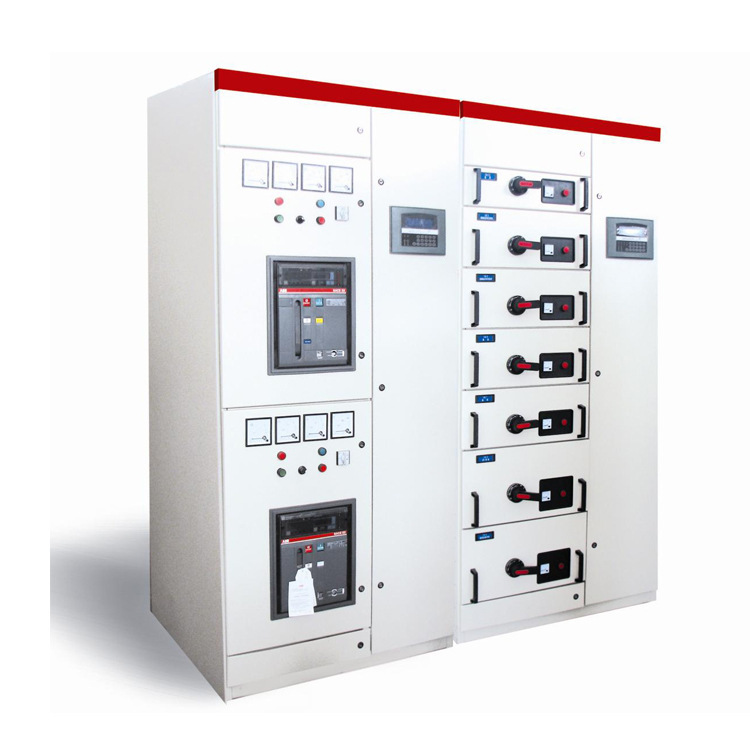Metal-Clad vs. Metal-Enclosed Switchgear: What’s the Difference?
When it comes to designing electrical power systems, choosing the right switchgear is a critical decision. Two of the most common types you’ll encounter are metal-clad and metal-enclosed switchgear. While they might sound similar, their differences in construction, safety, and application are significant. This guide will help you understand the key distinctions to ensure you select the best option for your project.
What is Metal-Clad Switchgear?
Metal-clad switchgear is a type of medium-voltage switchgear (2.4kV to 38kV) that adheres to strict ANSI/IEEE C37.20.2 standards. The term “metal-clad” refers to its highly compartmentalized construction. All major components—such as the circuit breaker, busbars, and instrument transformers—are housed in separate, grounded metal compartments.
A key feature is the use of drawout circuit breakers, which can be physically withdrawn from the enclosure for maintenance and inspection without de-energizing the main bus. This feature significantly enhances safety and simplifies maintenance procedures.
What is Metal-Enclosed Switchgear?
Metal-enclosed switchgear is a broader category that includes both medium-voltage (1kV to 38kV) and low-voltage switchgear. It’s defined by the fact that all live parts are enclosed within a grounded metal cabinet. Unlike metal-clad switchgear, it does not require internal compartmentation or drawout breakers.
Components like circuit breakers, fuses, and control devices are often housed in a single, non-compartmentalized enclosure. The standards for this type are less rigid, typically following ANSI/IEEE C37.20.3. This design is often more compact and cost-effective than its metal-clad counterpart.
Standards & Compliance
Understanding the governing standards is crucial for compliance and safety.
- Metal-Clad: Must comply with ANSI/IEEE C37.20.2. This standard mandates specific design requirements, including:
- Separate compartments for main bus, circuit breaker, and cable connections.
- Insulated and isolated busbars.
- Drawout circuit breakers.
- Safety interlocks to prevent incorrect operation.
- Metal-Enclosed: Typically follows ANSI/IEEE C37.20.3. This standard specifies a grounded metal enclosure for all equipment but does not require the same level of internal separation or drawout capabilities. Low-voltage metal-enclosed switchgear typically adheres to UL 1558 standards.
Key Differences: Metal-Clad vs. Metal-Enclosed
| Feature | Metal-Clad Switchgear | Metal-Enclosed Switchgear |
| Construction | Highly compartmentalized; separate, grounded compartments for each major component. | Less compartmentalized; components often share a single enclosure. |
| Safety Features | Superior; includes compartmentalization, drawout breakers, and mechanical interlocks. | Basic; live parts enclosed. Lacks advanced features, maintenance requires full de-energization. |
| Maintenance | Easier and safer; drawout breakers allow maintenance without de-energizing the main bus. | More challenging; entire unit must be de-energized for internal maintenance. |
| Reliability & Service Life | Higher reliability and longer service life (30+ years); designed for critical applications. | Reliable, but shorter service life (20-30 years); suitable for less critical use. |
| Cost | More expensive upfront due to complex construction and advanced features. | More budget-friendly; simpler design leads to lower manufacturing and purchase costs. |
| Space Requirement | Requires more space due to compartmentalized design and drawout access. | More compact; smaller footprint is ideal for limited-space facilities. |
1. Construction
- Metal-Clad: Features a highly robust and compartmentalized design. Each major component is in its own segregated, grounded steel compartment. This prevents an arc fault in one section from spreading to others.
- Metal-Enclosed: Less compartmentalized, with components often sharing a single enclosure. This design is simpler and more economical but offers less protection against fault propagation.
2. Safety Features
- Metal-Clad: Prioritizes safety with features like:
- Compartmentalization: Contains arc flashes to a single section.
- Drawout Breakers: Allows for safe breaker maintenance outside the energized cubicle.
- Mechanical Interlocks: Prevents personnel from accessing live parts or operating equipment incorrectly.
- Metal-Enclosed: Provides basic safety by enclosing live parts. However, it lacks the advanced safety features of metal-clad units. Maintenance often requires de-energizing the entire unit, which can be time-consuming and pose higher risks.
3. Maintenance Requirements
- Metal-Clad: Easier and safer to maintain. The drawout breaker design means maintenance can be performed on the breaker itself while the rest of the switchgear remains energized. This minimizes downtime.
- Metal-Enclosed: Maintenance is more challenging. To work on the internal components, the entire switchgear must be de-energized, which can lead to longer service outages.
4. Reliability & Service Life
- Metal-Clad: Due to its robust construction, superior insulation, and ease of maintenance, metal-clad switchgear generally has a longer service life and higher reliability. It’s designed for heavy-duty, critical applications.
- Metal-Enclosed: While reliable, its simpler construction and more challenging maintenance procedures can lead to a shorter service life and potentially more frequent outages if not properly maintained.
5. Cost Considerations
- Metal-Clad: Generally more expensive due to its complex construction, superior materials, and advanced safety features. The upfront cost is higher, but this can be offset by lower long-term maintenance costs and increased reliability.
- Metal-Enclosed: A more budget-friendly option. Its simpler design and fewer features make it less expensive to manufacture and purchase, making it a popular choice for less critical applications.
6. Space Requirement
- Metal-Clad: Often requires more space due to its compartmentalized structure and the need for room to withdraw circuit breakers.
- Metal-Enclosed: Typically more compact and has a smaller footprint, which is a major advantage in facilities with limited space.
Choosing the Right Type for Your Project
Selecting between metal-clad and metal-enclosed switchgear depends on several factors:
- Criticality of the application: For essential systems where downtime is not an option (e.g., hospitals, data centers, large industrial plants), metal-clad is the clear choice. Its reliability and ease of maintenance are invaluable.
- Budget: If cost is the primary driver and the application is less critical, metal-enclosed switchgear provides a safe and effective solution at a lower price point.
- Space constraints: When space is at a premium, the smaller footprint of metal-enclosed switchgear may be the deciding factor.
- Maintenance Philosophy: If your facility has a strict maintenance schedule and values minimal downtime, the drawout feature of metal-clad units will be a significant advantage.
Conclusion
Both metal-clad and metal-enclosed switchgear serve the vital function of protecting and controlling electrical equipment. However, they are not interchangeable. Metal-clad switchgear offers superior safety, reliability, and ease of maintenance, making it the preferred choice for critical, high-demand applications. Metal-enclosed switchgear provides a cost-effective and space-saving solution for less demanding environments. By carefully evaluating your project’s specific needs, you can make an informed decision that ensures the safety and longevity of your electrical system.
For expert guidance on selecting the right switchgear for your project, contact the professionals at BYYOU Electric. We are dedicated to providing solutions that meet your specific requirements, ensuring the safety and efficiency of your electrical infrastructure.
FAQ
Can metal-enclosed switchgear be used in high-voltage applications?
Metal-enclosed switchgear is typically used in low-to-medium voltage applications (up to 38 kV). For true high-voltage applications, different technologies like gas-insulated switchgear (GIS) are used.
Which is safer: metal-clad or metal-enclosed?
Metal-clad switchgear is inherently safer due to its compartmentalized design, grounded metal barriers, and mechanical interlocks. These features significantly reduce the risk of arc flashes and protect personnel during operation and maintenance.
What’s the typical lifespan of each type?
With proper maintenance, a metal-clad switchgear can last for 30 to 40 years or more. Metal-enclosed switchgear has a shorter typical lifespan, usually around 20 to 30 years, depending on the application and maintenance schedule.
How often should maintenance be performed?
For both types, a visual inspection should be performed annually. A more thorough maintenance check, including breaker testing and insulation inspection, is recommended every 3 to 5 years for metal-clad switchgear and more frequently for metal-enclosed units, depending on the operational environment.
Can either type be upgraded for smart grid integration?
Yes, both can be upgraded. Modern switchgear is often equipped with smart relays, sensors, and communication capabilities that enable them to be integrated into a smart grid for remote monitoring, control, and automation. Retrofit kits are also available for older units.







